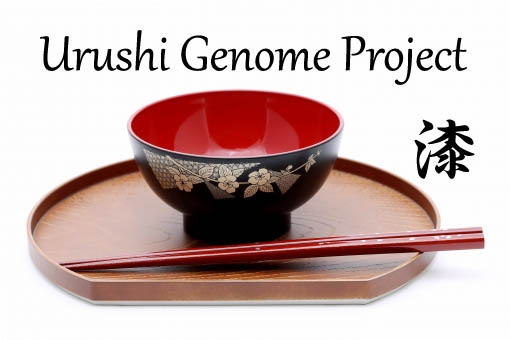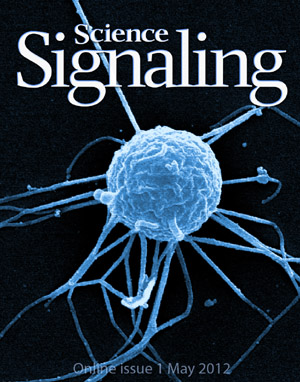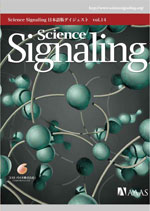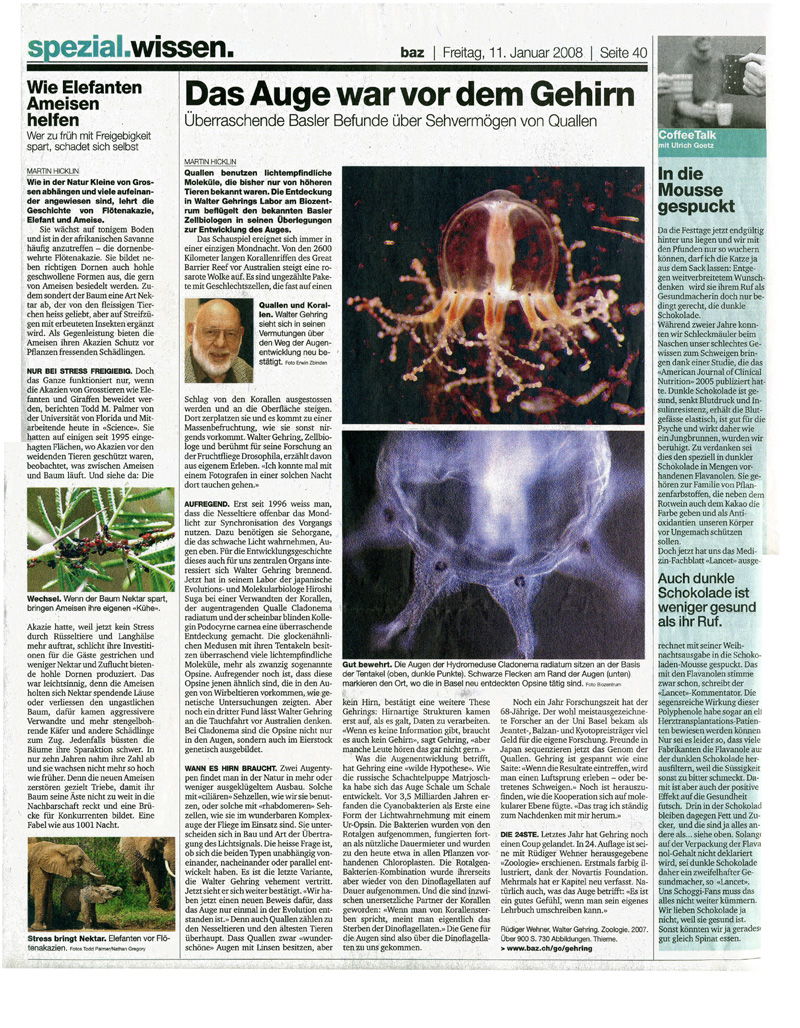Research
受験生向けの研究情報は大学のHPにまとめてありますので、そちらをご覧ください。
Evolution of animal (metazoan) multicellularity should have required
a lot of molecular-level innovations such as cell adhesion molecules,
cell-to-cell communication tools, and cell differentiation machinery.
Where did the genes encoding these mechanisms come from? Recent studies
of comparative genomics have revealed that surprisingly many "multicellularity" genes were already present in the
unicellular ancestor of metazoans. It is therefore considered that the
animal's ancestor reused these "old" genes for new functions to develop
multicellularity. However, the nature of this "co-option" process is
totally unknown. For instance, what were the ancestral functions of these genes?
Why did unicellular organisms need the multicellularity genes?

The "cell" of Capsaspora, a unicellular
relative of metazoans (Suga
& al. 2013 Nat. Comm.). Coloured genes are already present in
Capsaspora. Blue genes are secondary lost (but present in
Capsaspora) in the choanoflagellate Monosiga brevicollis.
To know the function of "multicellularity" genes abundantly
found in the unicellular relatives of metazoans, we use new
model organisms: ichthyosporeans and filastereans.
Ichthyosporeans are mostly symbionts of marine animals. Some are fish
parasites, damaging the fishery industry. They had long been considered
to be fungi, but later turned out to be close relatives of metazoans.
The life cycle of many ichthyosporeans starts from a single cell, which
simply grows in size. In the growth stage the
nuclear divides without cytoplasmic division, thus producing a
"syncytium". After the growth stage, the syncytium cellularises and the
produced daughter cells scatter (video). The daughter cells of some
ichthyosporeans can migrate efficiently by amoeboid movement.
Interestingly, some ichthyosporeans produce a characteristic colony,
which morphologically resembles the animal blastula.
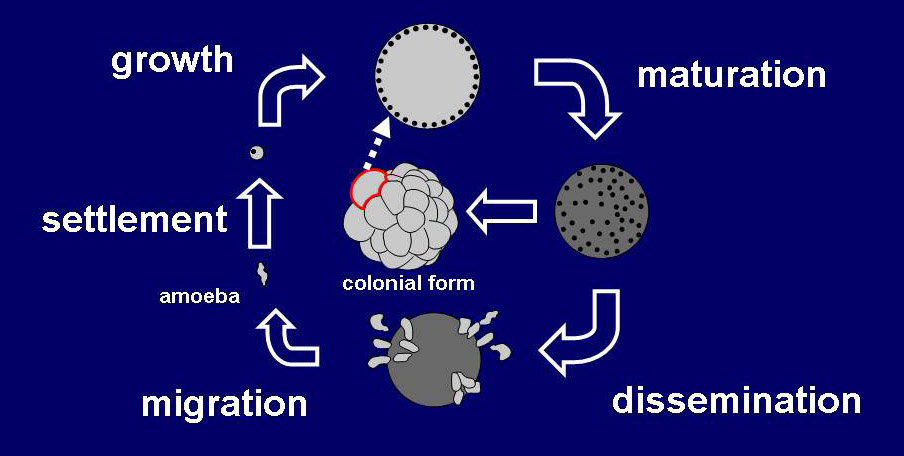
Life cycle of the ichthyosporean
Creolimax fragrantissima
(Suga
& al. 2013 Dev. Biol.)
We have recently developed the technique for transforming
Creolimax cells by electroporation (video). Gene silencing by siRNA and
Morpholino is also possible by the use of this technique.
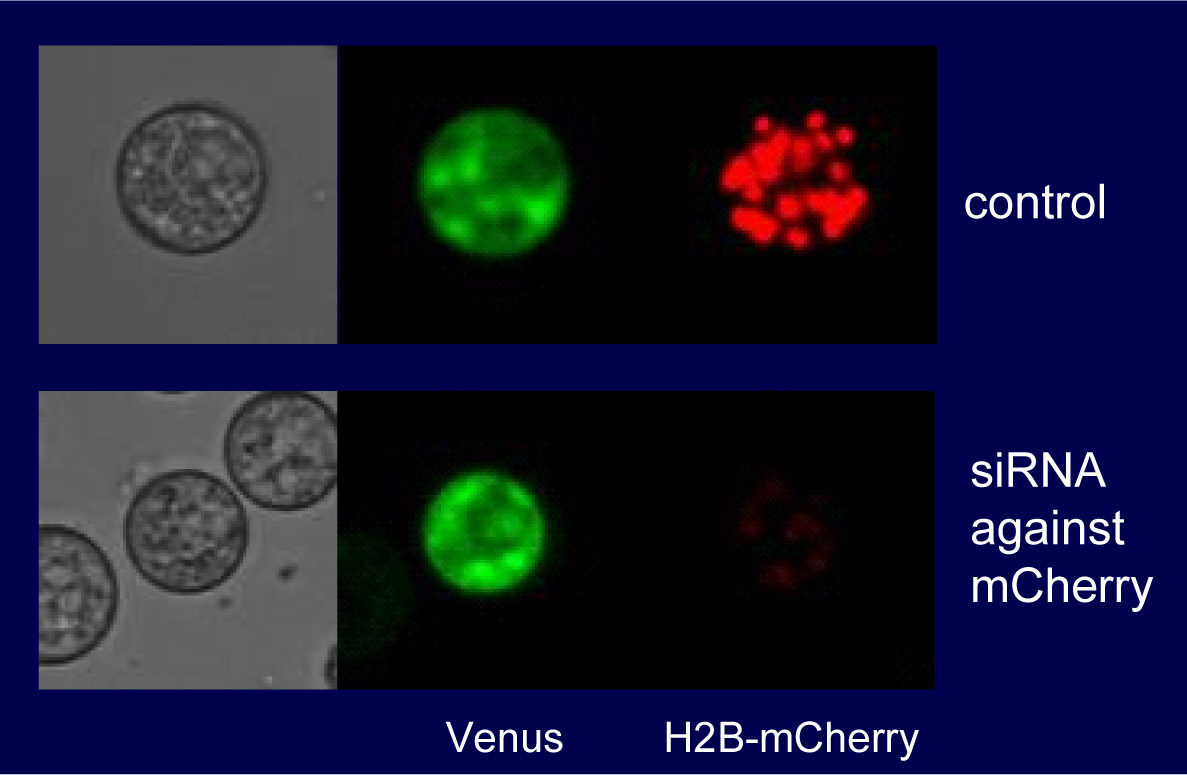
Small interference RNA surpresses gene
expression in Creolimax cell (Suga
& al. 2013 Dev. Biol.)
Filastereans include only two known genera: Capsaspora and
Ministeria. Capsaspora owczarzaki (video), the only Capsaspora
species described to date, is a symbiont to the snail Biomphalaria.
Biomphalaria is known as an intermediate host for
Schistosoma mansoni, which causes the second most devastating
parasitic disease (after WHO). Capsaspora is considered to prey
on Schistosoma sporocyst within the host snail.
Phylogenetically, Capsaspora is the second closest unicellular
relative to metazoans in our current knowledge. Thus Capsaspora
is also a promising model for deciphering the enigmatic origin of
multicellularity, and possibly offers a solution to schistosomiasis.
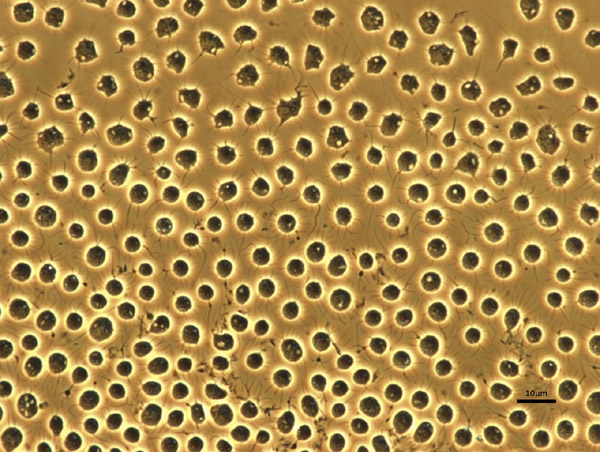
Capsaspora cells (photo by Lora
Lindley;
Suga & al. 2013 Nat. Comm.)
We are also working on the fancy dinoflagellates with a big
"eye". This project started on 2003, when the PI Suga was a post-doc in
Prof. Gehring lab in Basel, with a collaboration of Prof. Gojobori's
lab in Nationa Institute of Genetics in Japan. These unicellular
protists have an ocellus, which is nicely equipped with a huge shiny
lens, a red-black pigment, and a retina-like stacking structure.
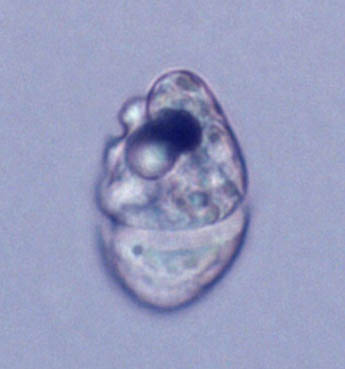
The dinoflagellate Nematodinium caught at the Inland Sea
of Japan in 2015, by a help of Dr. Setsuko Sakamoto.
Capsaspora owczarzaki genome sequence version4
Available here . Please cite the published paper.The modified scaffold 22 of the Oyster genome is available here.
Publication (since 2006)
The article is reviewd by Nature Research Highlights.
